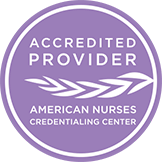When people are in a group, the normal action is no action. Everyone is waiting for someone else to act. Stating one's opinion and action on the group is sometimes not socially accepted. Inaction happens among well-intended people.
In a medical emergency, inaction is not an option. People will often choose not to act first because they may feel that other individuals are more educated or are in leadership positions. However, the ability to stay calm, make quick decisions, and work well under pressure are the ideal traits needed to respond to an emergency. Act! Any delay in the treatment can increase death (Bobko et al., 2020). More than one person reacting works out quickly.
The most common reasons people do not take action is because they are (Adult First Aid/CPR/AED Online, 2020):
- Unable to decide if there is an emergency
- Assuming someone is already responding
- Fearful of intervening (infection, blood, safety, ability, social ostracization)
The first response is to recognize an emergency. No one or everyone in the area may notice the problem. One should act as if they are the only person who recognizes the person is in trouble because they may be the only one. Decide to act. Any action is better than no action (Adult First Aid/CPR/AED Online, 2020).
Next, check the scene and the victim. It is important to maintain one's safety and not enter into a dangerous environment.
The Red Cross recommends the following method to respond to a healthcare emergency (Adult First Aid/CPR/AED Online, 2020):
- Check (check the person in distress)
- Call (call for help by sending someone else to call 911, or call yourself if no one is available)
- Care (render the aid you can and stay with the person until EMS responds)
All states have Good Samaritan Laws that legally protect people who give aid. These laws differ from state to state. A healthcare professional will be held to have acted within the standard of care of people with similar education and experience. If you are working when the crisis occurs, you will be expected to respond within your practice standard of care. For example, if a person has no pulse, you are expected to respond with BLS. If BLS is not initiated and you are trained in BLS, malpractice may have happened.









